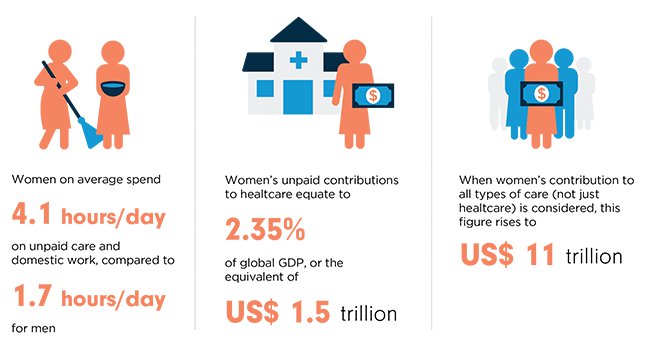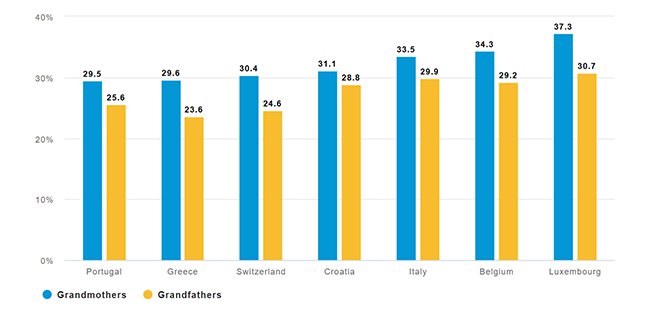/03DF27F0AD9D0BB68025855E0042B42F/$file/INT---Covid-19-care-economy.png) This blog post is part of the UNRISD Covid-19 series, in which authors explore the uneven distribution of impacts of both the pandemic and the crisis response, as well as the social, political and economic drivers of these disparities. The series will engage UNRISD’s networks and draw on its vast body of social development research to provide evidence-based responses to the current crisis as it develops and suggest viable strategies for a future where similar crises are not only less devastating, but also less likely to happen.
🔁 This piece was first published on UN Women’s “Women Count” data hub.
This blog post is part of the UNRISD Covid-19 series, in which authors explore the uneven distribution of impacts of both the pandemic and the crisis response, as well as the social, political and economic drivers of these disparities. The series will engage UNRISD’s networks and draw on its vast body of social development research to provide evidence-based responses to the current crisis as it develops and suggest viable strategies for a future where similar crises are not only less devastating, but also less likely to happen.
🔁 This piece was first published on UN Women’s “Women Count” data hub.
The COVID-19 crisis puts the fragility of the care economy into sharp relief. Women comprise 70% of health workers globally and even higher shares of care-related occupations such as nursing, midwifery and community health work, which all require close contact with patients. The risks these front-line workers take to save lives are compounded by poor working conditions, low pay and lack of voice in health systems where medical leadership is largely controlled by men.
Beyond the health system, other neglected parts of the care economy face increasing strain and require urgent relief and support. The vast amount of unpaid and poorly paid care and domestic work that women have always done is the backbone of the response to COVID. Unpaid family caregivers, community-based health workers, domestic workers and long-term care workers are essential workers in this crisis – but rarely recognized as such.
Women are at the frontlines of healthcare – paid and unpaid
Even in normal times, the lion’s share of work to maintain the health and well-being of children, the sick and the elderly is unpaid and done by women. Trying to “value the invaluable”, researchers estimate that women’s unpaid contributions to health care equal 2.35% of global GDP – almost USD$1.5 trillion. This includes unpaid health promotion and prevention activities, care for people with disabilities and chronic diseases, and assisting older persons. When women’s contribution to all types of care (not just health) is considered, this figure reaches a staggering USD$11 trillion. As the need for hygiene and care for those who contract the virus increases, so too will the burden on women and girls at the household level.
Women's unpaid care work has immense economic value

Source: UN Secretary-General’s policy brief: The impact of COVID-19 on women
Community health workers are another neglected group that will likely be at the forefront of the health response, particularly in developing countries. In sub-Saharan Africa, nearly 70% of these workers are women. Yet most receive little or no compensation and often spend their own income to perform their care duties. Now more than ever, recognizing and supporting these workers – with information, training, equipment and financial resources – is critical to contain COVID-19 and ensure access to basic health services.
In sub-Saharan Africa, 7 in 10 community health workers are women

Total: 322,199
Source: The impact of HIV on care work and the care workforce
Childcare is facing massive disruptions
The need for social and physical distancing has massively disrupted childcare arrangements. Globally, women predominantly look after children and the pressure on them is growing. School and daycare closures constrain caregivers’ ability to work, particularly when jobs can’t be done remotely. Where remote work is possible, stress and multitasking will take a disproportionate toll on women’s health and well-being.
Informal childcare arrangements have also been upended. This includes care by grandparents, who are older and face greater risks from COVID. While grandfathers are also active, grandmothers provide the bulk of care. In countries like Belgium, Croatia, Greece, Italy, Luxembourg, Portugal and Switzerland, between 30 and 37 per cent of grandmothers and 24 to 31 per cent of grandfathers care for grandchildren on a weekly basis.
Grandparents aged 65 and older who provided childcare in the past 12 months, selected European countries, 2014

Source: Progress of the World's Women 2019
Although the demand for childcare has increased, supply – both formal and informal – is decreasing due to efforts to protect those most vulnerable from this virus. The resulting care conundrum is particularly severe for health-sector and other essential workers with children. In addition to paid family leave, flexible working hours and other social protection for workers with childcare responsibilities, safe and accessible emergency childcare for essential workers should be an integral part of the COVID response.
Ensuring care for older persons
Older persons, persons with disabilities and those with chronic diseases are particularly vulnerable to COVID, but their care needs make it hard to self-isolate. Women are overrepresented among older persons in all countries - 57% of those aged 70+ and 62% of those over 80. Due to greater longevity and the steep rise in disability after age 75, women are more likely than men to report difficulties with self-care. Older women are also more likely to live alone – with 32% of women versus 15% of men aged 80+ living alone. As such, older women depend more on external care – from family members, neighbours or paid caregivers – arrangements that were already patchy, fragile and fraught with inequalities before the pandemic. Where older women do reside with relatives, this can increase their exposure to COVID-19.
Percentage of persons aged 80 years or over, by household living arrangement and sex, global, circa 2010

Source: Living Arrangements of Older Persons: A Report on an Expanded International Dataset
Women of all ages also provide the bulk of paid and unpaid care for older persons, but the continuity of this care will depend on their own health, well-being and economic security, as well as the risks of infecting others in their care. It is essential to consider how this care can be maintained. Exempting unpaid family caregivers and paid outpatient, long-term care and domestic workers from freedom-of-movement restrictions and providing them with the support and equipment necessary to do their jobs safely is an important first step.
An opportunity arises out of the crisis
If there is one silver lining, it is that the pandemic has forced us to rethink our priorities. What we now consider essential, is precisely the kind of work that our economies have consistently neglected and devalued. A people-centered plan for economic recovery should take this into account and prioritize long-overdue investments in the care economy.
About the author
Silke Staab is a research specialist at UN Women. She has published widely on gender, care and social policy and co-authored several of the organization’s flagship reports. Before joining UN Women, Silke earned her PhD from the University of Manchester and worked as researcher for different UN agencies and non-governmental organizations, including the United Nations Research Institute for Social Development (UNRISD) and the Economic Commission for Latin America and the Caribbean (ECLAC).
Sandrine Aida Koissy-Kpein Dahouet-Boigny, Statistics Specialist provided additional data support and Samrat Maskey, Data Analyst produced the interactive data visualizations.
🔁 This piece was first published on UN Women's "Women Count" data hub.
Photo: porCausa, licensed Creative Commons (CC BY-SA 2.0) on Flickr.